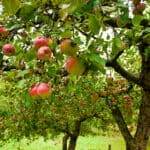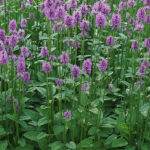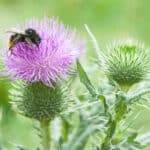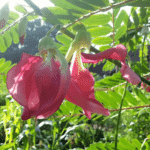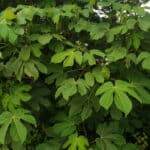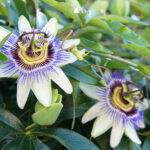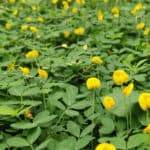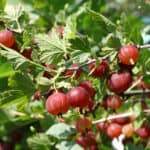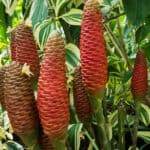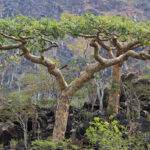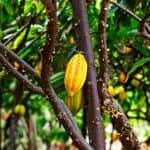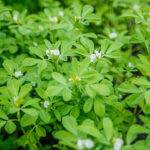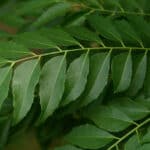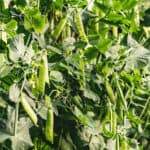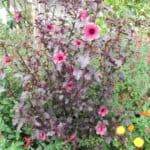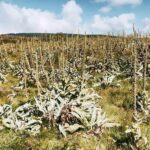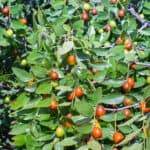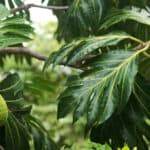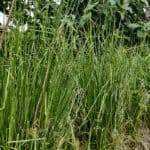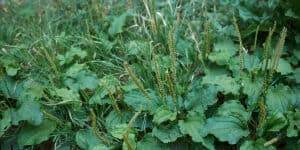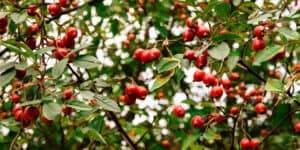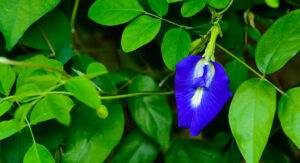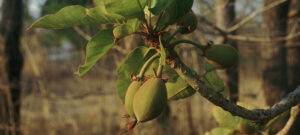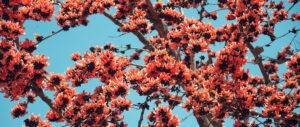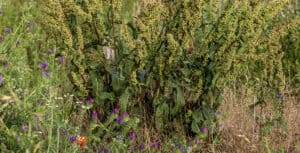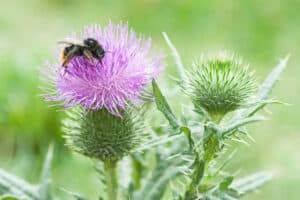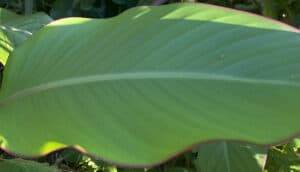Introduction
Peaches are the crown jewel of midsummer tree fruit. No crop is more synonymous with the months of June, July and August. During this time the fruit is bountiful at orchards and its distinct fragrance wafts noticeably about farmer’s markets.
The juicy sweet orbs, with their orange, yellow and pinkish hues, are the perfect complement to the sweltering days and steamy nights of summer. Whether baked into a cobbler, prepared for shortcake, dashed into a zesty salsa, seared on the grill or simply enjoyed eaten fresh out of hand, a quality, local, freshly picked peach always hits the sweet spot. Their versatility is further appreciated during the dreariness of winter when enjoying the canned, frozen or dried fruit.
Like the summer season itself, we reluctantly watch the peach harvest fade with the increasingly shorter days and cooler temperatures. Alas, all good things must come to an end, as the last of the luscious stone fruit gives way to apples, pears, pumpkins and the crisp fall weather.
Because of their candy-like sweetness, abundant production and longevity, peaches can be a perfect addition among other sustainable crops within a permaculture landscape.
Plant History & Origin
The technical taxonomy of the peach, and nectarine, is Prunus persica, which translates to gift from Persia. Although originally deriving from Northwest China, the peach was notably introduced to the Romans by the Persians. After Alexander the Great’s conquest of Persia, he transported peach seeds to Europe. Cultivation of the exotic fruit took off in Spain and France.
Long before that, peaches were first domesticated along the Yangtze River. There, fossilized peach stones have been recovered, dating back to 6000 BC. Peaches are mentioned as far back as the 10th century in Chinese writings. The peach blossom was believed to ward off evil spirits and promote vitality. Each new year was brought in by hanging the blossoms on the front doors of homes.
The fruit’s journey to the new world involved Spanish explorers bringing it to South America in the 16th century, the French introducing it in New Orleans and English colonists cultivating it in their Virginia and New England territories.
It is believed that the first peach tree planted in North America was by the early 17th century colonist George Minifie at his Virginia home. Thomas Jefferson planted peach trees at his Monticello estate in 1768. The practice of grafting onto hardy rootstock led to commercially viable varieties. In the late 1800’s, farmers in Maryland, Delaware, Georgia and Virginia began to grow peaches on a larger scale for mass production.
Today China leads the way in overall production, sending to market over half of the world’s peaches. They produce over 11 million tons per year, with Italy second, producing 1.5 million tons, followed by the US at over 1 million tons per year.
Interesting Facts
- Peaches and nectarines are the same species (Prunus persica) with the only difference being the selective breeding that causes the fruit to be with or without fuzz. For many fruit aficionados, That is the question.
- The genus Prunus also includes cherries, apricots, plums and almonds.
- Peaches belong to the rose (Rosaceae) family.
- There are over 700 varieties of peaches.
- Peaches are known to reduce anxiety. Could that be the reason a synonym for happy is “peachy”?
- Peaches are a symbol of good luck, protection and longevity.
- Peach blossom herbal tea is a common drink in Korea.
- Peach blossoms are used in Traditional Chinese Medicine to treat digestive disorders.
Medicinal Benefits
Peaches are Loaded with Nutrients and Antioxidants
Consume them when they’re extra ripe to enjoy heightened levels of nutrition, antioxidants and taste!
Peaches Aid Digestion
The soluble fiber in peaches feeds beneficial gut bacteria and the insoluble fiber helps move food through the intestines.
Peaches Promote Heart Health
Peaches bind to bile acid and excrete the waste, along with cholesterol. Studies have shown that peach juice can lower blood pressure.
Peaches Improve Skin Health
Studies show that applying peach flower and fruit extract to the skin may help prevent UV damage. The high levels of Vitamins A and C undoubtedly benefit skin, hair, and nail health.
Peaches May Help Prevent Cancer
Peaches have high levels of carotenoids and caffeic acid, antioxidants known to have cancer-fighting properties.
Peaches can Reduce Allergy Symptoms
Studies have concluded that peaches prevent the release of histamine (immune system chemical) in the blood, thereby reducing allergic reactions.
Peaches Boost Immune Function
Peaches are full of immune-enhancing vitamins, minerals, and antioxidants.
Perennial, Annual, or Biennial
Peaches are perennial fruit trees, producing a crop year after year. Production may decrease after about 10 years, but peach trees have been known to thrive for 20+ years when properly cared for.
How To Propagate Peach Trees
Peaches can be grown from seed, cuttings, bare root plants, and mature potted trees.
Growing Peaches from Seed
Starting a peach tree from seed is the longest process, but may be the most rewarding. The tree that sprouts from the peach pit will be a unique variety, different from its parent plants. All of the young tree’s characteristics will be varied, adding to the allure and excitement of growing from seed.
Few peach seeds that drop to the ground in nature germinate and go on to produce a full tree. Many are affected by mold and mildew and eventually decompose. To improve the survival rate of the seed, it is cleaned and sterilized. Any leftover flesh is scrubbed away with a soft, dry toothbrush. The pit can then be dipped into a solution of 10 parts water to 1 part bleach, then left to air dry.
To prepare the seed for a season of growth, it will require a period of stratification. By placing the seed into the refrigerator for 4 months, the natural rhythm of the seasons and the necessary cold winter temperatures are simulated. It must be completely dry, placed in a plastic bag or container and set into the fridge 4 months ahead of when it will be planted.
Cracking the outer covering, known as the endocarp, may improve the germination rate. The seed contained inside will face less resistance when sprouting. A pair of pliers can be used to gently crack the outer casing, carefully as to not damage the seed.
The pit is started in a large pot with good-quality soil. A container that is at least 12 inches tall will ensure adequate space for the taproot to grow and develop. The seed gets covered with about an inch of soil and is kept moist. Having gone through the cold treatment of stratification, the planted seed can now be placed in a warm and bright location to encourage germination.
Depending on its environment, the seed should sprout in 4-6 weeks. The soil is kept moist and warm, while receiving plenty of light. After the young tree develops a couple of sets of true leaves and all danger of frost has passed, it’s time to move it outdoors. The sapling can be gradually hardened off, exposing it to the sun, wind, and temperature for increasing lengths of time until it’s accustomed to the elements.
Propagating by Cuttings
Cuttings taken from a peach tree will identically resemble the parent plant. For this reason, it’s a great method to propagate and duplicate desired varieties.
Cuttings perform best when taken as dormant hardwood during the winter. Some varieties however, such as ‘Redhaven’, can be taken from softwood or semi-hardwood in the summer.
Cuttings should be a 4-6 inch straight stem with an abundance of leaf nodes. A suitable stem is cut at a 45-degree angle and the bottom two sets of leaves are removed.
Using some form of rooting hormone will greatly improve the chances of successfully getting the cutting to take root. The cut end is treated with rooting hormone and stuck into a gallon pot filled with moistened, sterile medium, so that the bottom third of the stem is submerged. The cutting is held straight and in place with the medium firmly packed around it.
Potted cuttings are then set outside in a sheltered, slightly shaded area, out of direct sun. Warm temperatures, consistently staying 60 degrees or warmer, are necessary to promote rooting.
The soil is kept moist and after about 4-6 weeks roots have developed. Potted cuttings are allowed to establish a strong root system and then set in a sunny, sheltered place for the first year, finally being ready for transplanting the following season.
Bare Root Trees
Bare root trees are a cheap and efficient method of propagating peaches, but timing is critical. They are shipped easily, in large amounts making them the ideal choice for mass plantings.
Specialized fruit tree nurseries uproot their trees while dormant, in the early spring or late fall. The exposed roots are wrapped in damp newspaper, mulch or hay and then surrounded by plastic to ensure hydration. An extended exposure to sun or warmth can awaken the tree from dormancy before it’s planted. This is a threat to the tree’s survival and health so it’s important that the tree is planted as quickly as possible upon acquiring it.
Some notable benefits of bare root trees are:
- They grow more quickly and are more adaptable than potted trees.
- Nurseries provide great varietal selections, like easy-to-grow and disease resistant cultivars.
- They can be managed from an earlier stage and pruned to a desirable shape and structure for optimal fruit support.
Mature Potted Trees
Established peach trees are also widely available. They are convenient to purchase and plant because of the developed roots, leader and limbs. But, they can be expensive, take longer to adjust after transplanting and require more training through pruning.
Every form of propagation has its benefits and disadvantages, it’s up to the grower to weigh out these factors and select the right method for them.
How To Plant A Peach Tree
Site location
For the best success, choose a site that receives full sun. Don’t let any trees, shrubs or structures on the landscape encroach on the space or available sunlight of your peach trees. Imagine what it will look like fully mature, and plan accordingly.
Blossoms are especially susceptible to frost damage. If late spring frosts are a threat, plant peach trees on the high side of a north facing slope and the cold air will settle below. Hills facing north warm more slowly and can suspend blooming by a couple weeks. Trees can also be planted 15 feet away from the north side of a building to delay flowering, protecting crop loss from a late frost.
Protection from strong winds should be taken into consideration. Open spaces and hilltops can receive strong gusts of wind, making life difficult for training trees and developing fruit. If wind is an issue, trees can be staked for support, or utilize hedges or fences as obstructions. Be careful not to enclose the trees completely, as breeze and air circulation is vital for health.
Spacing
Standard peach trees should be spaced about 15-20 feet apart, while dwarf varieties can be maintained well at 12 feet apart.
Soil Preparation
Soil at the site of planting should be tested ahead of time, ideally in the previous fall. This gives you an opportunity to amend the soil and address any deficiencies.
Lastly, a thick layer of mulch around the base of the tree will keep soil cool into the spring, preventing blossoms from opening too early.
Planting Instructions
Peach trees should be planted in the early spring while they’re dormant. Fall plantings are also possible where winters are mild. Do not plant in the fall in regions where the soil freezes, as this could kill the roots before they get a chance to get established.
The tree should be planted at the same depth it was at the nursery, note the dark dirt mark on the stem. Take a measurement from the stem mark to the bottom of the roots or root ball to figure out how deep the hole needs to be. Dig it deep and wide enough for the roots to expand. As the old saying goes “You want to dig a fifty dollar hole for a five dollar plant.”
Sculpt the planting hole so that it’s widest near the surface, accommodating the feeder roots’ ability to grow quickly in search of water and nutrients. Use a garden fork to break up compacted soil around the sides and at the bottom of the hole. Settle the tree into the hole and make sure it’s straight up and down from all angles. Gradually backfill with the original soil, distributing evenly over the roots. The soil can be leveled off at the base of the tree and lightly tamped down by hand or with the back of a hoe to settle it in and eliminate air pockets gently.
Water thoroughly after planting. Spread a 2-inch layer of mulch around the base of the tree to retain moisture. Be sure it doesn’t rest against the trunk, this can lead to rot and disease. Give water to your newly planted peach tree at least once a week during the first year, especially if rainfall is less than 1 inch per week.
Use a tree wrap to protect the trunk from rodents, sunscald and lawnmower damage. Wrap from the base of the tree up to the lowest branch and tie it in place. The wrap can be removed after about a year when the tree is sturdy and established.
Only stake the tree if it’s top heavy or located in an exceptionally windy location. If using stakes, provide a few inches of slack so the tree can sway in the breeze and still benefit from the support. Young trees need to feel this resistance in order to develop a sturdy base of strong roots. Stakes can be removed after a year.
Peach trees can be purchased at nurseries in two different forms: Bare root or container-grown.
Bare Root
Bare root trees are a cheap option that are easy to manage. Plant the bare root tree when it is still dormant to avoid any complications. Leave a small raised mound of untouched soil in the middle of the planting hole. Spread the roots over the mound while removing any broken, diseased or circling roots. Backfill with soil, water well and add mulch.
Container-Grown
Container-grown trees will likely be mature and ready to produce fruit within a year or two, but can cost a good deal more than bare roots. To prepare for planting, remove any tags and wires to prevent damage to the stalk of the tree. Hold on tight and support the plant as you turn it upside down to remove it from the pot. Cut off any dead or sick roots and carefully tease out any pot bound roots. Circling roots can be cut through. The tree can be set in the hole as deep as it had been growing in the pot. Backfill with soil, water well and apply mulch.
Soil Requirements
Peach trees prefer soil that is well drained and sandy. The surface level of the soil should be lighter with the deeper layers having a heavier texture. The crown and roots are allowed to dry out, deterring rot and disease, while retaining a storage of moisture and nutrients down below. Add compost and resolve any drainage issues before planting. Peach trees require a pH of 6.0-6.5.
Other Peach Tree Planting Tips
Grow your own peaches anywhere in the country, as long as the temperature doesn’t stay below -10 degrees for extended periods of time. Attention should be paid to the variety and their specific climate and environmental requirements.
Popular Peach Tree Cultivars Include:
Late flowering/cold tolerant: ‘Redhaven’, ‘Jefferson’, ‘Emery’, ‘Clayton’, ‘Jayhaven’, ‘Cresthaven’ and ‘Nectar’. ‘Reliance’ and ‘Sunapee’ are extra hardy varieties.
Early flowering: ‘Springold’ and ‘Earligrande’.
Heat tolerant: ‘Florida King’ and ‘Florida Prince’.
Dwarf: ‘Compact Redhaven’ and ‘Compact Elberta’.
Bacterial leaf spot resistant: ‘Raritan Rose’, ‘Ouachita Gold’, ‘Candor’, ‘Champion’, ‘Nectacrest’, ‘Biscoe’, ‘Clayton’, and ‘Redhaven’.
Canker resistant: ‘Biscoe’, ‘Elberta’, ‘Candor’, ‘Brighton’, ‘Harbelle’, ‘Harbrite’, ‘Madison’, ‘Raritan Rose’ and ‘Harken’.
Peach leaf curl resistant: ‘Clayton’, ‘Correll’, ‘Dixiland’, ‘Elberta’, ‘Redhaven’ and ‘Stark EarliGlow’
Brown rot resistant: ‘Carmen’, ‘Elberta’, ‘Orange Cling’, ‘Red Bird’ and ‘Sunbeam’.
Growth & Care
Sun and Water Requirements
Peach trees will thrive with full sun exposure. It’s very important to select a location that receives a lot of sunshine to ensure that the tree can leaf out and produce abundant blossoms, leading to a bountiful harvest of large, ripe fruit. It takes an incredible amount of energy for a tree to leaf out, bud up, flower, set fruit and finally ripen to maturity. Receiving ample sun allows photosynthesis to occur at a high rate, providing the energy needed to produce high quality fruit.
The soil around the base of the tree should stay wet, but not soaked or waterlogged. Peach trees will produce the best, juiciest fruit when their roots are evenly moist throughout the season. If the soil is sandy or the weather is particularly dry, consider installing a drip irrigation system. Mulching around the base of the tree is a great way to reduce evaporation, suppress weeds and conserve water.
Fertilization
In cold climates, peaches should be fertilized early in the spring. This gives the wood time to grow and harden off before the freezing winter months. Add a layer of compost as mulch and incorporate other low nitrogen organic materials to condition the soil and gradually feed the tree.
Length of Growing Season
Blooming, fruiting and ripening will vary greatly depending on variety and climate zone. Peach trees generally blossom in the spring, set fruit shortly thereafter and are ready for picking in the summer until the early fall.
Peach trees break out of dormancy early in the spring. The branches are softwood and grow at an impressive rate. It’s imperative to prune peach and nectarine trees every year, lest they become overgrown and tangled, producing suboptimal fruit.
Pruning Branches
Annual pruning and thinning is a crucial human intervention when it comes to peach trees. Their rapid growth and plentiful fruit sets make the two tasks obligatory every year. Peach trees should be pruned after buds appear and begin to open.
The open center method of pruning works best for peaches and other stone fruit. This method prioritizes air flow and the permeation of sunshine, reducing the chance of disease development and spread.
To implement this technique, the freshly planted leader is cut back to 2-2 ½ feet and all side branches are shortened. At the start of the summer, 3 scaffolding branches growing in different directions are selected, the rest are removed. The tree is pruned lightly in subsequent years to encourage fruiting. The scaffold limbs are cut back to the same height every year to promote the growth of new fruiting wood.
Any limbs that are diseased, dead or emerge under the main scaffolding are removed throughout the season.
Thinning Fruit
Fruit trees often produce more fruit than their limbs can bear. This can lead to the production of tiny, inedible fruit, the breaking of limbs and spread of disease through overcrowded fruit. Thinning solves all of these issues by concentrating a tree’s energy into fewer, but larger and healthier fruits.
Fruit is thinned off the tree while it’s young, the earlier the better. Deformed, insect damaged and small fruit is removed to make way for the healthiest peaches. A distance of 6-8 inches between developing fruit is recommended to get the best results.
Pest Management
Tree fruit is extremely difficult to protect against all of the known pests, diseases and fungal infections. Prevention is the best place to start and planting disease resistant varieties is quite helpful. The base of the tree is kept free of weeds and any fallen or rotten fruit. Diseased or damaged wood should be removed promptly.
The observation of pests and their life cycles helps the grower keep infestations in check. An IPM (Integrated Pest Management) approach is an effective way to ward off pests. A biological intervention that causes the least damage to the environment is the invitation or release of predatory insects. Natural and gentle treatments like horticultural oils and soap sprays are effective ways to treat pests.
Natural fungicides include garlic, baking soda and certain beneficial microbes. Sulfur and copper should be used sparingly, as they are a bit more harsh and can be injurious to the tree and environment.
Harvesting Tips & Techniques
Peach trees will reliably bear edible fruit in about 3 years. When the skin changes color and the flesh is slightly impressed by touch, the fruit is ready to pick. Lightly press the top of the peach where it is connected to the tree to check for ripeness without bruising it. When it is ready, the fruit can be gently held in the palm of the hand and twisted effortlessly off the branch. Never squeeze or pull!
Processing & Cooking
Many will argue that peaches are best enjoyed at their peak ripeness, fresh off the tree. Although this may be the case, there are innumerable other ways to enjoy the delectable summer flavor that peaches provide.
Peaches are a supreme fruit to use in almost any culinary application. They can be baked into pies or cobblers. Peach jam and preserves are a delicious side dish for any meal. Their juicy, sweetness is highlighted in fruit salads, salsas and smoothies. Grilled peaches have become a trendy summer treat. The gastronomic exploits of this summertime gem are difficult to overstate.
Preserving & Storing
Ripe peaches will keep for about a week in the refrigerator. They can be sliced and frozen for later use in baking or smoothies. Canned peaches are an excellent way to preserve fresh fruit and savor its sweetness any time of year. Preserves will be shelf stable after being processed in a hot water bath, using just fruit and a simple syrup. Drying the fruit in a dehydrator is another way to preserve large batches of peaches, converting them to a shelf-stable snack.
